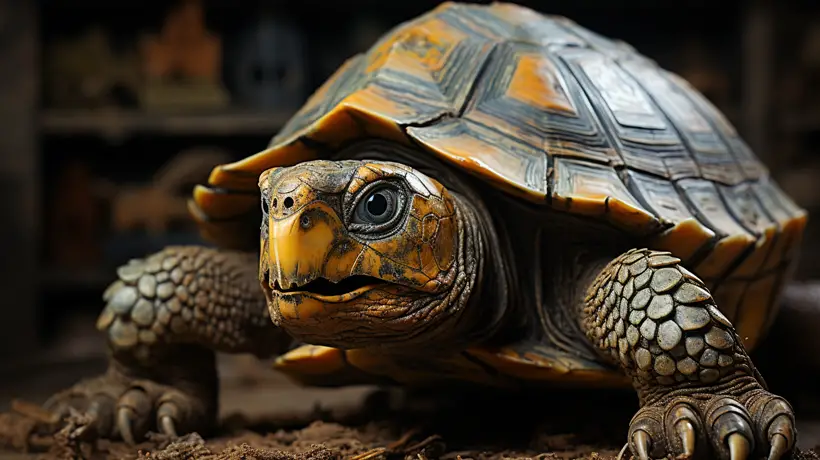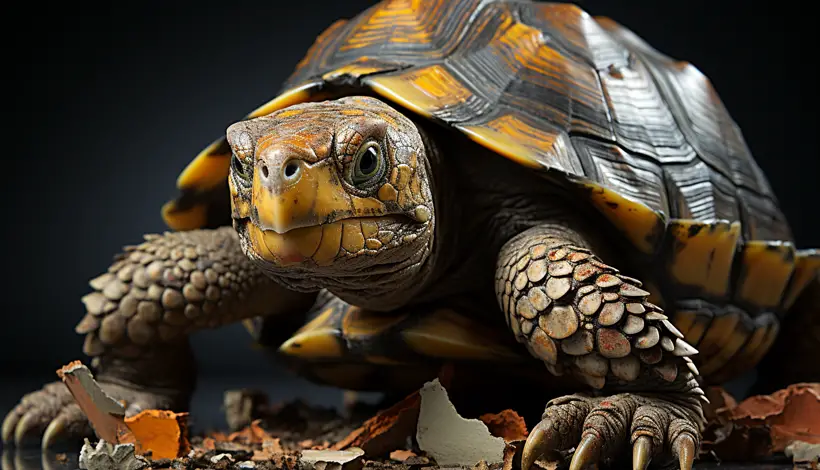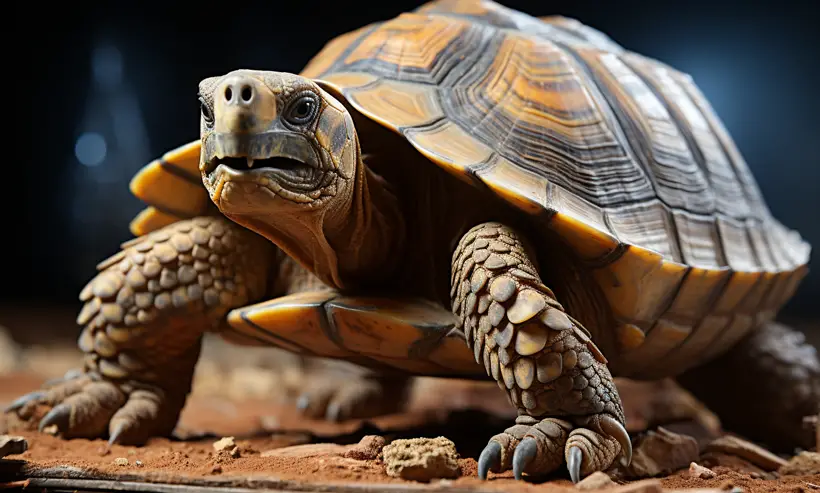Tortoise Cracked Shell: What To Do About It?
The tortoise shell is a hardened layer covering its body and protecting its internal organs from injury or harsh weather conditions. However, this layer may crack and cause infections by exposing the delicate internal organs.
So, tortoise cracked shell: what to do about it? You need to clean the crack with antiseptics and seal it using resins/glue. If the crack is too big, close it with zip ties and wires. For deep cracks in the body tissues, administer antibiotics and dress the wound before sealing the crack.
This article will review the practices to be done to seal cracks in the tortoiseshell to prevent infections and further cracking. So keep reading.
Tortoise Cracked Shell: What To Do About It?
Contents

Healing of shell cracks is a long process, but you can follow these steps to help heal the cracked shell.
Step 1: Use An Antiseptic To Clean The Wound
Cracks can go deep into the soft tissues and become points of infection and rotting. Therefore, you must first clean the wounds and cracks with antiseptic solutions. You can use homemade antiseptics such as diluted iodine and chlorhexidine.
Step 2: Maintain A Warm, Dry Enclosure For Your Tortoise
Once the crack is cleaned and dried, you need to keep the tortoise in a warm and dry environment to prevent further infection.
Step 3: Administer Antibiotics
To avoid any blood infections through the cracks and open wounds, administer antibiotics with a vet’s assistance.
Step 4: Repair Large Cracks
The large cracks should be repaired with zip ties, wires, or glue, but only when directed by an expert.

Step 5: Apply A Fiberglass Patch And Resin To Seal The Crack
To strengthen the zip ties and the glue holding the cracked pieces together, apply a fiberglass patch and resin. The combination helps hold the cracks together and prevent further cracking.
Step 6: Let The Shell Dry Fully
Before returning your tortoise to its usual environment, allow the crack and its content to dry fully. Likewise, before attempting any shell repair at home, you should always consult an exotic vet or reptile specialist.
What Causes A Tortoise’s Shell To Crack?

Several factors may cause the shell to crack. Here, we shall discuss the major causes of cracked shells in tortoises.
Medical Conditions
Your tortoise may be suffering from infections, not getting enough vitamin D3 and calcium, and underlying health problems that can cause the shell to crack.
A clear indication of an ill tortoise is weight loss and reduced appetite. It may also be infested by worms and parasites that cause anemic conditions and skin lashes.
Poor Diet And Feeding
For the development and growth of a strong shell that is able to withstand external damage, you need to provide your pet with a proper, balanced diet.
A poor diet and inconsistent feeding program will result in weak shells that crack and break from the slightest impact.

Injury
The shell may be cracked from injuries occasioned by sharp, heavy objects that may fall on your tortoise. Your tortoise may also fall from high grounds and land on rough surfaces, causing its shell to crack.
According to studies through the Mediterranean on Hermann tortoises, most of the cracks and injuries on their shells are caused by injuries from human agricultural activities.
Unsanitary Living Conditions
Unsanitary conditions such as dirty water tanks and grounds in its living compound and water tank may also cause cracks in its shell.
Their urine and feces, when accumulated in the compound, cause fungal and bacterial infections on the tortoise shell that end up rotting and cracking.
Dehydration Or Low Humidity
When the sun is too hot and the humidity is low, the shell dehydrates and may end up cracking from shrinkage.
The shell may crack if you fail to provide drinking water to hydrate the body internally. It ends up using any fluids and moisture accumulated beneath the shell, causing it to crack.
How Can I Prevent Shell Cracking In My Tortoise?

Cracked shells may take months or years to heal completely. Hence, it’s advisable you practice the following preventive measures to prevent shell cracking.
- Provide drinking water and baths to keep your tortoise hydrated
- Feed your tortoise a balanced food that matches its nutritional requirements
- Maintain ideal relative humidity levels between 45%-55% for the species of your tortoise. You can also have water pools in the compound for external body hydration
- Allow your tortoise time to busk and absorb UVB light, which is used to help your tortoise manufacture vitamin D3
- To avoid harm, keep sharp things out of your tortoise’s enclosure
- Regularly inspect your tortoise’s shell for damage or infection symptoms, and get medical care if necessary
- Keep the compound clean and eradicate any fungus and bacteria
FAQs
Below are frequently asked questions about tortoises’ cracked shells that will help you address the cracks and facilitate the healing process.
Yes. The cracked shell will heal itself with time, given the right conditions and treatment. Shells grow continually throughout their life though at a slower rate replacing the cracked and damaged parts.
The healing period varies from one tortoise to another and depends on various factors such as age, care given to the tortoise, and the extent of the crack.
However, on average, a cracked shell may take between five months and one year to completely heal.
No. Not all adhesives can be used for medical purposes since they contain harmful chemicals. When sealing cracks on the tortoise shell, it is recommended you apply medical adhesives made of cyanoacrylate that are Food and Drug Administration (FDA) approved.
Conclusion
A cracked tortoise shell can be a huge problem if not well treated, as it may become an entry point for germs and infections. These infections in the cracks cause shell rotting that may extend and cause death if untreated.
You need to clean the crack, dry it, and seal it using any recommended adhesives such as resin and medical glue. Monitor the healing process and ensure that the tortoise remains dry to avoid infecting the crack when moist.

